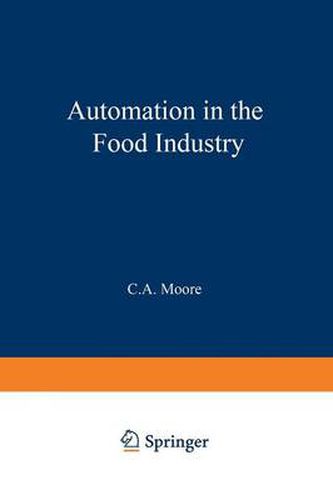Readings Newsletter
Become a Readings Member to make your shopping experience even easier.
Sign in or sign up for free!
You’re not far away from qualifying for FREE standard shipping within Australia
You’ve qualified for FREE standard shipping within Australia
The cart is loading…






This title is printed to order. This book may have been self-published. If so, we cannot guarantee the quality of the content. In the main most books will have gone through the editing process however some may not. We therefore suggest that you be aware of this before ordering this book. If in doubt check either the author or publisher’s details as we are unable to accept any returns unless they are faulty. Please contact us if you have any questions.
This book is designed to be everything its title suggests-a practical guide to automation within the food industry. It is the first book to offer practical advice on what can be a most bewildering subject in an industry where the use of effective automation is of paramount importance. There are many books dealing with the theory and practice of control systems in both the food and other industries. However, these tend to offer too much detail in both areas to be classed as overviews, or cover too much of the more obvious detail and gloss over, or avoid, the elements where the decisions are hard-even though these are the areas which are fundamental to successful and expansive projects. This book identifies those elements of any automation scheme which have to be considered first, and that form the foundations for any successful project. The editorial introduction outlines the content of the book and is a useful starting point. Examples are used, wherever possible, to show what can be done, how it can be achieved, and what to avoid. A glossary of definitions is included at the end of the book. All the chapters have been written by engineers, with many years’ experience in this field, who have been able to express their views freely. The result is a book which covers the key areas of the subject, using a minimum of the technical jargon with which this subject abounds, in a readable, practical manner.
$9.00 standard shipping within Australia
FREE standard shipping within Australia for orders over $100.00
Express & International shipping calculated at checkout
This title is printed to order. This book may have been self-published. If so, we cannot guarantee the quality of the content. In the main most books will have gone through the editing process however some may not. We therefore suggest that you be aware of this before ordering this book. If in doubt check either the author or publisher’s details as we are unable to accept any returns unless they are faulty. Please contact us if you have any questions.
This book is designed to be everything its title suggests-a practical guide to automation within the food industry. It is the first book to offer practical advice on what can be a most bewildering subject in an industry where the use of effective automation is of paramount importance. There are many books dealing with the theory and practice of control systems in both the food and other industries. However, these tend to offer too much detail in both areas to be classed as overviews, or cover too much of the more obvious detail and gloss over, or avoid, the elements where the decisions are hard-even though these are the areas which are fundamental to successful and expansive projects. This book identifies those elements of any automation scheme which have to be considered first, and that form the foundations for any successful project. The editorial introduction outlines the content of the book and is a useful starting point. Examples are used, wherever possible, to show what can be done, how it can be achieved, and what to avoid. A glossary of definitions is included at the end of the book. All the chapters have been written by engineers, with many years’ experience in this field, who have been able to express their views freely. The result is a book which covers the key areas of the subject, using a minimum of the technical jargon with which this subject abounds, in a readable, practical manner.